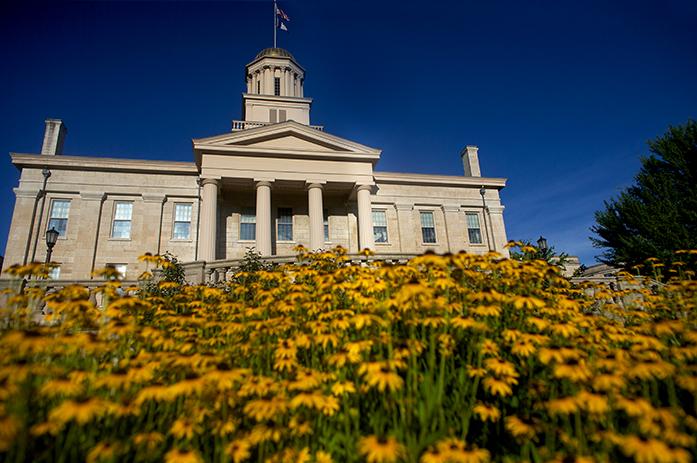The Old Capitol has served as a hallmark of the University of Iowa’s campus since the university was founded in 1847, yet every day, thousands of Hawkeyes walk past the building without knowing its full story.
A lecture Thursday night aimed to share part of this story by exploring the role the Old Capitol played in Iowa’s history, specifically the creation of its Constitution.
Liz Crooks, the Old Capitol Museum communication coordinator, said the lecture is part of the museum’s attempt to get more undergraduates involved in the Old Capitol’s history.
“Offering this lecture is one of the ways we would like to get more people aware of what’s going on in the Old Capitol,” she said. “It’s a really iconic building in the center of campus, and students should know more about it.”
The Old Capitol Museum is especially trying to expand these opportunities for Greek Life students. Allison O’Keefe, a communications intern at the Pentacrest Museum, is behind the initiative.
“Part of what I wanted to accomplish is to increase awareness of the Pentacrest museum for greek students,” O’Keefe said. “A lot of people don’t know what the museum has to offer.”
Todd Pettys, a UI law professor specializing in constitutional law, is responsible for the creation of the lecture.
“I really wanted to tell the stories of Iowa’s founders, including their personalities and the arguments they had in creating our Constitution,” he said. “I wanted it to be more of a colorful walk through time.”
The cornerstone of the Old Capitol was laid on July 4, 1840. Pettys said because of the way the population in the territory of Iowa was distributed at the time, the area here was a convenient central location and Iowa City was created to be the site of the state capital.
Despite the relatively short span that Iowa City was the state capital, the history that occurred in that decade forming Iowa’s Constitution is some of the most important to the state.
Pettys said some of the more significant arguments included banks and currencies, the rights of African-Americans in the state, and the state’s boundaries.
“This was right in the middle of the slavery debate of the 1840s, a decade and a half before the Civil War,” Pettys said. “The Northern states wanted to carve up the land west of the Mississippi into small states because each state gets two U.S. senators, regardless of its size. In doing so, they would increase the number of antislavery states in Congress. The South wanted the exact opposite, and Iowa’s current borders are a result.”
Pettys’ lecture also touched on the mystery of the copper box, a time capsule of sorts in which Robert Lucas, the first governor of the territory of Iowa, stored several historical documents before burying in the cornerstone of the Old Capitol. Though the box was discovered in the 1923 by a maintenance man, he returned it to its place in the building’s foundation, where it still remains.



